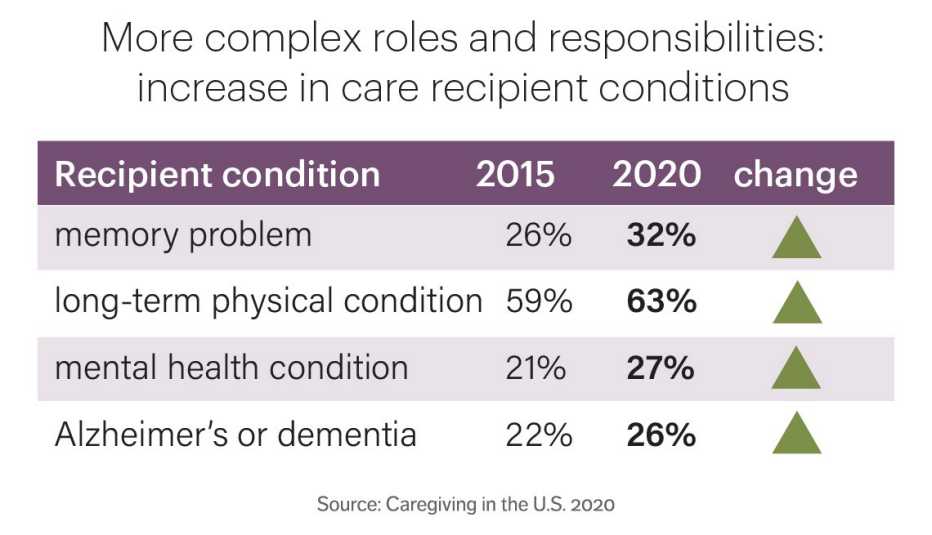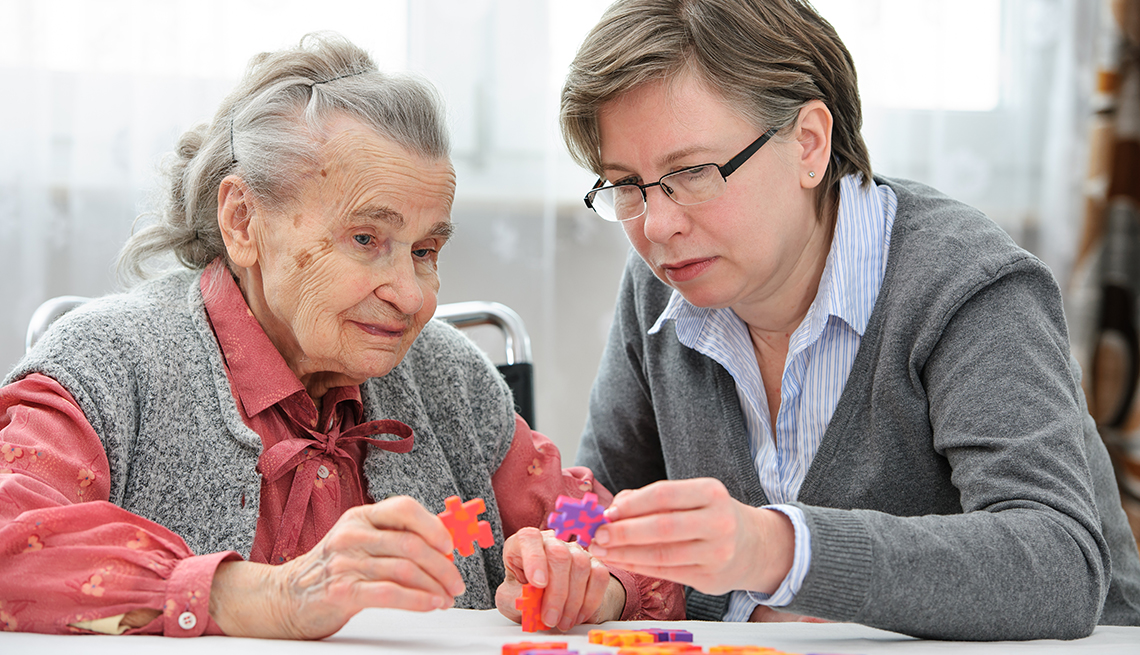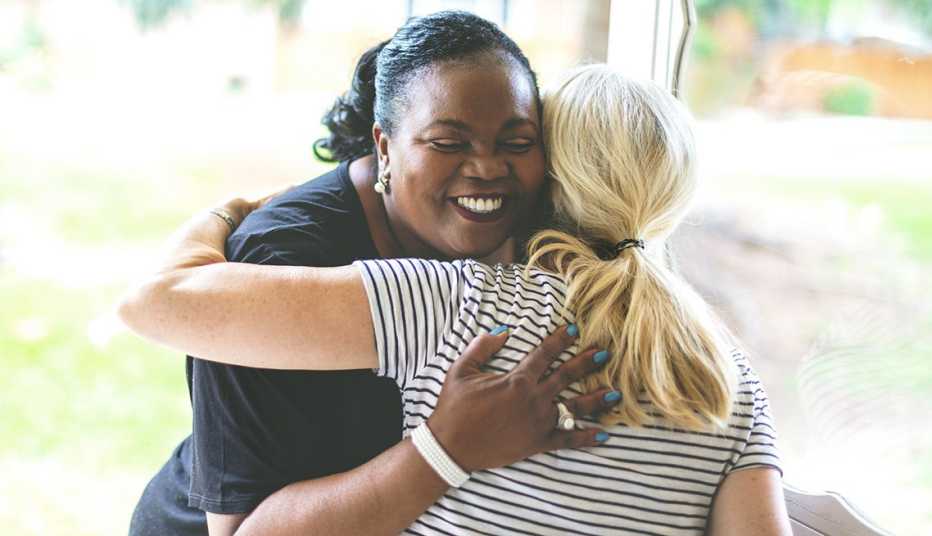Staying Fit
A new AARP study of American family caregivers reveals that 26 percent are looking after relatives with Alzheimer's disease and dementia, a significant boost from 22 percent five years ago. And, in general, the care they provide is growing more complex as recipients grow older and suffer more health problems, the study shows.


The report, “Caregiving in the U.S. 2020,” which AARP developed in conjunction with the National Alliance for Caregiving (NAC), found that the number of relatives caring for adults age 50 and older jumped significantly, with nearly 42 million adult Americans providing that care, up from 34 million in 2015.


AARP Membership— $12 for your first year when you sign up for Automatic Renewal
Get instant access to members-only products and hundreds of discounts, a free second membership, and a subscription to AARP the Magazine.
More family caregivers (32 percent) are tending to someone with memory problems, compared with five years ago, when the figure was 26 percent. Further, 27 percent are caring for people with mental health issues (up from 21 percent).
Many older Americans — 63 percent (an increase from 59 percent) — need care because of long-term physical conditions, such as those with mobility problems that may mean they have to use a walker or a wheelchair and may be recovering from a stroke, surgery or cancer treatment.
All this can equal added burdens for family caregivers, as many juggle day jobs and other family responsibilities with the demands of caregiving, said Susan C. Reinhard, AARP senior vice president and director of the AARP Public Policy Institute, who played a key role in the report, which is based on online surveys conducted in 2019 of more than 1,392 Americans age 18 and older who provided care for an adult in the past year.
"I hold family caregivers in great esteem, and I've started to see them as a scarcity,” Reinhard said in a telephone interview.
Those caregivers help with a panoply of needs of those they care for:
- 99 percent help with instrumental activities of daily living, such as paying bills and dealing with insurance companies.
- 60 percent help with activities of daily living, including bathing, dressing and eating.
- 58 percent perform medical and nursing tasks, such as wound care and managing multiple medications.
- 71 percent monitor their care recipient's condition.
- 65 percent communicate with health care providers about the recipient's care.
- 56 percent advocate for the recipient with care providers, community services or government agencies (up from 50 percent in 2015).
Feeling our way
Joel Johnson, 60, of Auburn, Washington, knows that routine well. Seven years ago his wife, Nancy, then 52, was diagnosed with early-onset Alzheimer's disease, radically changing their lives.




































































